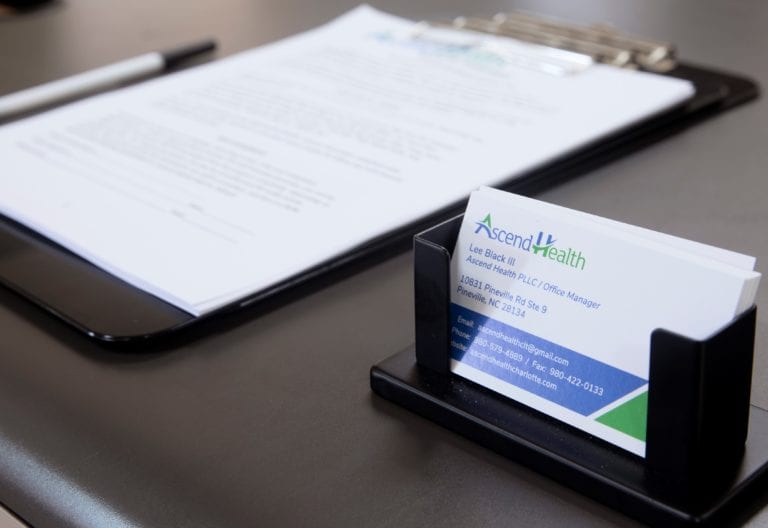Understand Suboxone therapy
When you search for affordable suboxone treatment for addiction, you want a clear path to lasting recovery that fits your budget and your lifestyle. Suboxone, a combination of buprenorphine and naloxone, is a cornerstone of medication-assisted treatment (MOUD). It binds to the same brain receptors as other opioids, blunting intoxication and preventing cravings while offering a built-in ceiling effect that makes it harder to overdose on Suboxone alone (Harvard Health Publishing). By understanding how this therapy works and its benefits, you can make informed decisions as you transition from detox or inpatient care into a stable, outpatient setting.
How Suboxone works
Suboxone is a partial agonist of the mu-opioid receptor. Unlike full agonists such as heroin or oxycodone, it produces enough receptor activation to prevent withdrawal and cravings without causing the high that leads to misuse. Key mechanisms include:
- Craving reduction: By occupying opioid receptors, Suboxone eliminates the intense urges that drive relapse.
- Ceiling effect: Once a certain dosage is reached, additional Suboxone does not amplify respiratory depression, reducing overdose risk.
- Withdrawal control: It eases the uncomfortable symptoms associated with tapering off stronger opioids.
This pharmacological profile supports a smoother transition into outpatient treatment and daily life.
Benefits of medication-assisted treatment
Combining Suboxone with structured therapy and recovery supports enhances your chance of long-term success. Major benefits include:
- Reduced overdose risk: Medications for opioid use disorder cut fatal overdoses by roughly 50 percent (Harvard Health Publishing).
- Stabilized lifestyle: Patients report improvements in sleep, appetite, and social functioning as cravings subside.
- Flexibility: You can access treatment through in-person clinics, telehealth platforms, or community providers.
- Holistic recovery: When paired with counseling, peer support, and case management, Suboxone becomes part of a comprehensive care plan focusing on mental health, employment, and family relationships.
By choosing an outpatient Suboxone approach, you maintain daily routines while receiving the medical oversight you need.
Evaluate treatment costs
One of the biggest barriers to accessing outpatient opioid programs is cost. Understanding the expenses associated with Suboxone and related services empowers you to plan effectively and avoid surprises. Costs vary based on your insurance, dosage, chosen treatment setting, and whether you combine therapy with medication.
Average out-of-pocket expenses
Without insurance coverage, Suboxone sublingual film typically costs around $166 or more for a 30-count pack, depending on your state and pharmacy discounts (Bicycle Health). Rehabilitation center fees can add hundreds of dollars per week if you require on-site counseling or intensive outpatient programming [1]. Use the table below to compare typical payment methods:
| Payment method | Approximate cost | Notes |
|---|---|---|
| Cash for Suboxone film | $166+ per 30 strips | Varies by pharmacy and state |
| Weekly outpatient therapy | $50–$200 per session | Sliding scale options may apply |
| Telehealth consultation | $40–$100 per appointment | May reduce travel and time costs |
| Intensive outpatient | $500–$1,500 per week | Includes group counseling and case management |
| Sublocade injection | $1,200–$1,500 per monthly dose | See insurance section below for coverage |
Factors affecting your cost
Several variables influence what you pay:
- Dosage requirements: Higher buprenorphine doses may increase medication expenses.
- Frequency of visits: More frequent physician check-ins or therapy sessions raise overall costs.
- Geographic location: Urban clinics often charge more than rural providers.
- Program intensity: Intensive outpatient or partial hospitalization programs cost more than standard maintenance therapy.
By anticipating these factors, you can discuss payment options with your provider and choose the right combination of services for your budget.
Explore insurance and discounts
Most major insurance plans cover Suboxone treatment, but benefits, copays, and prior-authorization requirements differ. Even if your plan has high out-of-pocket expenses, there are programs and discounts designed to lighten the load.
Medicaid and private insurance
Almost all private insurers and Medicaid programs include coverage for buprenorphine/naloxone combinations, ensuring that you can access outpatient buprenorphine treatment without prohibitive costs (/outpatient-buprenorphine-treatment-program). Check your policy details to learn about:
- Copay amounts for brand-name Suboxone versus generic films
- Preferred pharmacy networks
- Prior authorization steps
If you qualify for Medicaid, you receive Suboxone regardless of your state of residence (Bicycle Health).
Manufacturer and coupon programs
The pharmaceutical company behind Suboxone offers a copay assistance card that caps your monthly payment at $5 for eligible commercially insured patients. In addition:
- GoodRx coupons can reduce costs on both generic buprenorphine/naloxone and brand-name strips.
- Manufacturer assistance programs serve those without insurance, helping you secure a steady supply at minimal expense (/sublocade-treatment-with-insurance-coverage).
Assistance for uninsured patients
If you lack health insurance, consider:
- Sliding scale clinics that adjust fees based on your income.
- Federally qualified health centers offering low-cost or free MAT.
- Telehealth suboxone maintenance programs featuring subscription models (/telehealth-suboxone-maintenance-program).
By combining these resources, you can access affordable care even without traditional coverage.
Combine supports and therapy
Effective relapse prevention depends on more than medication alone. Integrating counseling, coaching, and peer support creates a robust aftercare plan that addresses emotional resilience and life-skill development.
Role of counseling and coaching
Counseling sessions reinforce the gains made by Suboxone therapy. Typical options include:
- Individual therapy to explore personal triggers and coping strategies.
- Group sessions that foster shared accountability and encouragement.
- Family therapy to rebuild trust and communication with loved ones (/outpatient-mat-with-family-therapy).
Recovery coaching services offer one-on-one guidance, helping you navigate challenges such as employment, housing, and social reintegration.
Benefits of relapse prevention therapy
Structured relapse prevention MAT treatment programs combine evidence-based approaches to reduce the likelihood of setbacks. Benefits include:
- Identification of high-risk situations through cognitive behavioral techniques.
- Development of customized coping plans to manage stress and cravings.
- Regular progress reviews to adjust your treatment plan proactively (/relapse-prevention-mat-treatment).
By participating in these therapies, you strengthen your ability to maintain sobriety through life’s ups and downs.
Navigate aftercare continuum
Long-term recovery is a journey that extends well beyond your initial prescription. Ascend Health’s aftercare continuum provides end-to-end support, ensuring you have the resources needed at every stage of your outpatient opioid recovery.
Ascend Health’s outpatient programs
Ascend Health offers a tiered approach that adapts to your evolving needs:
- Suboxone maintenance therapy outpatient program for stabilization and monitoring (/suboxone-maintenance-therapy-outpatient-program).
- Aftercare suboxone treatment program with integrated counseling and peer groups (/aftercare-suboxone-treatment-program).
- Dual diagnosis MAT program to address co-occurring mental health disorders (/dual-diagnosis-mat-program).
This continuum ensures you never face recovery alone.
Telehealth maintenance options
For those with transportation or scheduling challenges, telehealth opioid treatment with Suboxone allows you to:
- Attend virtual check-ins with your prescriber.
- Receive mailed prescriptions for buprenorphine/naloxone.
- Join online support groups and educational workshops (/telehealth-opioid-treatment-with-suboxone).
Telehealth blends convenience with clinical oversight, making ongoing care more accessible.
Dual diagnosis and family therapy
If you experience co-occurring anxiety, depression, or trauma, specialized programs integrate mental health and addiction treatment into a single plan. Family therapy modules equip your loved ones to support your recovery and rebuild healthy dynamics, reinforcing a stable home environment.
Take actionable next steps
Moving from planning to action can feel daunting, but a clear roadmap helps you secure the treatment you deserve. Use the steps below to guide your journey to affordable Suboxone-based recovery.
Finding a local clinic
- Search for outpatient opioid rehab with Suboxone providers in your area (/outpatient-opioid-rehab-with-suboxone).
- Verify that they accept your insurance or offer sliding scale fees.
- Read patient reviews and inquire about success rates and program intensity.
Preparing for treatment
- Gather your medical history, including past treatments and current medications.
- Verify your insurance benefits for MOUD and mental health services.
- Set realistic goals for frequency of appointments, therapy sessions, and medication refills.
Setting recovery goals
Establish measurable milestones to track your progress over time:
- Maintain a consistent medication schedule for at least 30 days.
- Complete an initial series of counseling sessions.
- Reconnect with support networks such as peer groups or family therapists.
- Reevaluate your treatment plan every 90 days to adjust dosage or services.
By following these steps, you create a solid foundation for sustainable recovery.
Embarking on affordable Suboxone treatment for addiction requires careful planning, reliable information, and a supportive network. With a clear understanding of costs, coverage, and aftercare options—especially through Ascend Health’s continuum—you can access the tools you need for lasting recovery. Take charge of your journey today by researching local programs, exploring financial assistance, and committing to a tailored plan that keeps you on the path to health and stability.



